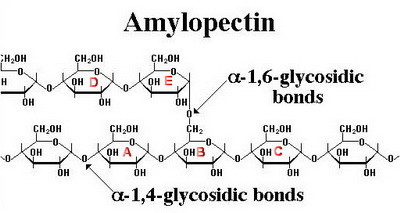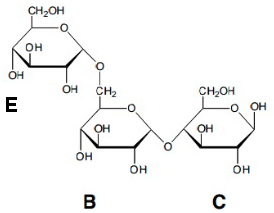Question #9056d
1 Answer
I count four different trisaccharides that can be produced by the incomplete hydrolysis of amylopectin.
Explanation:
Amylopectin is a highly branched polymer of glucose. Its partial structure is

(Adapted from smartkitchen.com)
I have labelled five of the glucose units as
The possible trisaccharide combinations are
α-Maltotriose (Rings
α-Maltotriose is formed from rings

It consists of three glucose units joined by α-(1→4) linkages.
α-Isomaltotriose
Isomaltose is formed from rings

It consists of three glucose units joined by an α-(1→4) and an α-(1→6) linkage.
α-Panose
α-panose is formed from rings

Adapted from www.chegg.com
It consists of three two glucose units joined by an α-(1→6) and an α-(1→4) linkage.
α-Isopanose
α-Isopanose is formed from rings
The

